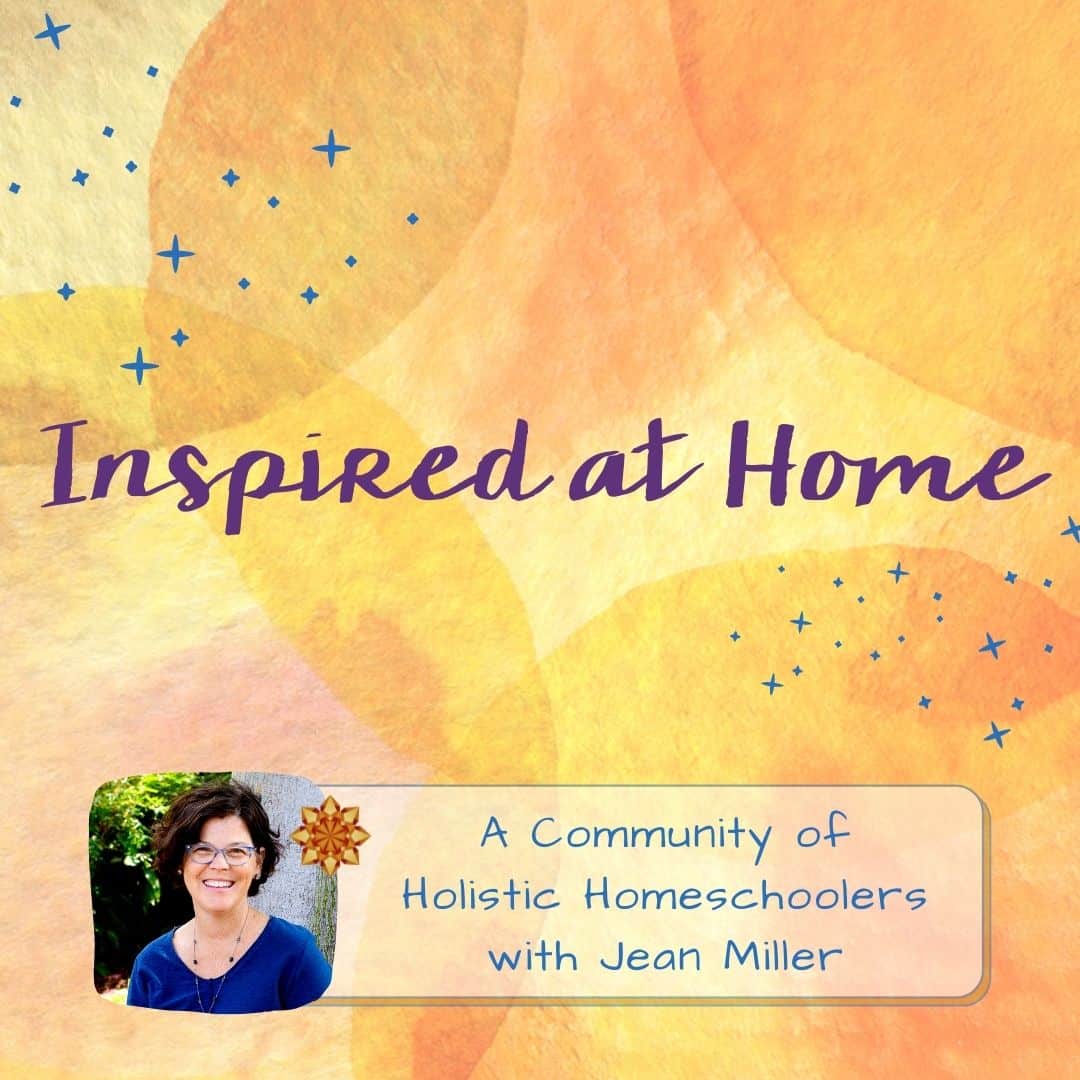Episode 164
Today on the podcast, we’re taking a look at the spectrum of perfectionism and how to navigate the delicate balance between anxiety-driven striving, paralyzing fear of failure, and also healthy artistry in living life.
Perfectionism is not necessarily all bad! That’s really the message I want you to take away from this episode.
There’s a spectrum of perfectionism and you can use this episode as an awareness-raising tool to see where you fall on the spectrum, and decide if you might like to adjust your approach – in parenting, in homeschooling, or life.
The Spectrum of Perfectionism
Perfectionism, which is often looked down upon as a negative way of approaching day-to-day life, can manifest in various forms.
Anxiety-Drive Perfectionism
On one end of the spectrum lies an intensely passionate perfectionism, which is a relentless pursuit marked by inner pressure and dissatisfaction. It’s the constant battle between striving for flawlessness and the anxiety of never reaching it.
This anxiety-driven perfectionism is characterized by force, frustration, over-endeavoring, and anxious energy.
Avoidant Perfectionism
At the opposite end of the spectrum, we encounter avoidant perfectionism. Here, the fear of failure is so paralyzing that it hampers progress, stifles creativity, and fosters a sense of inadequacy. The pursuit of perfection becomes an obstacle, hindering rather than propelling us toward our goals.
Avoidant perfectionism is characterized by depressed feelings, giving up, not trying, feelings of being overwhelmed, and avoiding the tasks or duties at hand. Life isn’t going as planned but the inner desire is for a high standard of perfection.
If you experience this form of avoidant perfectionism, you may be in a state of distracting yourself or avoiding even trying to reapproach or reengage in a situation.
Healthy Perfectionism
Now for the middle ground! Nestled between these extremes of anxious and avoidant perfectionism lies a type of perfection-seeking that feels good. This is healthy artistry coupled with striving for excellence ~ the middle ground where joy, balance, and creativity converge.
Within each soul is the desire for beauty and mastery. It’s OK to strive for goodness, beauty, and harmony in your home and homeschooling! You CAN put the fine touches on things, you can work hard to create lessons that flow, and you can get into your life and strive for excellence in all you do.
When you are healthily “perfecting” things in your life, this is a space where high standards coexist with self-compassion, allowing room for growth, learning, and the appreciation of imperfection. Healthy perfection-seeking is characterized by joy in work well done, beauty, meaning, balance, connection, and goodness.
Do you see areas in your life where your endeavor for perfection is anxiety-driven, avoidant, or even healthy? Or perhaps a mix of all three?!
“Don’t let the perfect be the enemy of the good.”
~Voltaire
Real-Life Stories of Perfectionism and Homeschooling
Here are a couple of stories from the Art of Homeschooling Team that we were recently chatting (and laughing!) about…
Sarah’s story: When her oldest son was in 3rd or 4th grade, she really wanted to make window stars with him. They’d done some origami together and she thought he was ready to try window stars. He did well even though he was a little frustrated about the slippy waxy paper. Still, Sarah’s son liked making his first window star and decided to make a camouflage window star with black and green paper! Initially, Sarah admits that was hard for her! She thought the black and green star wouldn’t glow in the window and she also felt like these were uninspiring colors to choose. But, she hung up the star anyway. It didn’t stay up quite as long as the others! Let me just say that we all laughed about how little things like black stars on windows can provoke the perfectionism inside of us as Waldorfy parents.
Jean’s story: When my oldest son was in the elementary grades, he would draw pictures in his main lesson books to go with the story. He would add little cartoon character speech bubbles above the animal or person he drew, with some comment or sound effect like “boom!” or “crash!” That drove me crazy! I wanted him to draw the perfect Waldorf pictures in his main lesson books and these were not that! They were stick figures and speech bubbles with sometimes snarky commentary. This makes me chuckle at myself now. How funny it is to get so uptight about our children’s drawings! But I did. I was striving for perfection and felt worried that we weren’t doing holistic homeschooling right…
Navigating Your Personal Spectrum of Perfectionism
I will just add that I’ve struggled with perfectionism myself through the years. Both anxiety-driven perfectionism as well as avoidant perfectionism. And I’ve often thought I needed to OVERCOME perfectionism somehow.
But I find this spectrum of perfectionism to be a much gentler way to look at the whole picture. Because if we pay attention to where we are on the spectrum, we can choose to shift things toward the middle ground.
To navigate the spectrum of perfectionism effectively, we want to pay attention to the energy behind our actions and reach for the healthy middle ground. The best way to do this is to embrace self-compassion and acknowledge our mistakes as part of the journey.
Tips for Finding Balance
I encourage you to enjoy your pursuits of mastery, artistry, and creativity in life! Just be aware if you see yourself becoming unbalanced, whether you start trying to force an outcome, or you start to feel depressed because life gets messy and you can’t seem to rein it all in so instead you feel like giving up. If you pay attention to the thoughts and feelings behind your actions, they will reveal your consciousness around perfectionism.
Here are a few tips for creating balance with perfectionism:
- Self-Compassion: Treat yourself with kindness and understanding, embracing imperfections as opportunities for growth.
- Realistic Standards: Strive for excellence while setting achievable goals. Embrace progress rather than expecting immediate perfection. I heard a great line the other day that we have to be willing to be really bad at something in order to get good at it.
- Mindful Enjoyment of the Process: Find joy in the journey, relishing the moments of creation, exploration, and improvement.
In essence, the spectrum of perfectionism isn’t about eliminating the drive for excellence but rather about channeling it in a way that fosters fulfillment and a deeper appreciation for the artistry of the journey.
Embrace Imperfect Excellence
Just to recap, the spectrum ranges from anxious perfectionism on one end to avoidant perfectionism on the other, with healthy perfection-seeking in the center.
Remember, perfectionism is not all bad! Instead of judging yourself, use the spectrum of perfectionism as an awareness-raising tool to see where you are on the spectrum. So you can decide if you might like to adjust your approach, whether that be in parenting, homeschooling, or life.
INSPIRED AT HOME
We talk about these ideas a lot in the Inspired at Home community…
How to strive for our best while not getting caught up in anxiety or avoidance. Ah, the spectrum of perfectionism is fluid and ever-changing. Come join us! We have 3 coaching calls every month to give you the support you need as a homeschooling parent.
Rate & Review the Podcast
If the Art of Homeschooling Podcast has inspired you, I’d LOVE it if you could rate and review the podcast on your favorite podcast player! Reviews can be left on Apple Podcasts (iTunes), Podcast Addict, or Stitcher.
Or simply pop on over to lovethepodcast.com/artofhomeschooling and choose where you want to leave your review.
And if you want to show your appreciation for the Art of Homeschooling Podcast, you can buy me a cup of tea!
Never Miss an Episode!

Check Out All the Episodes Here







